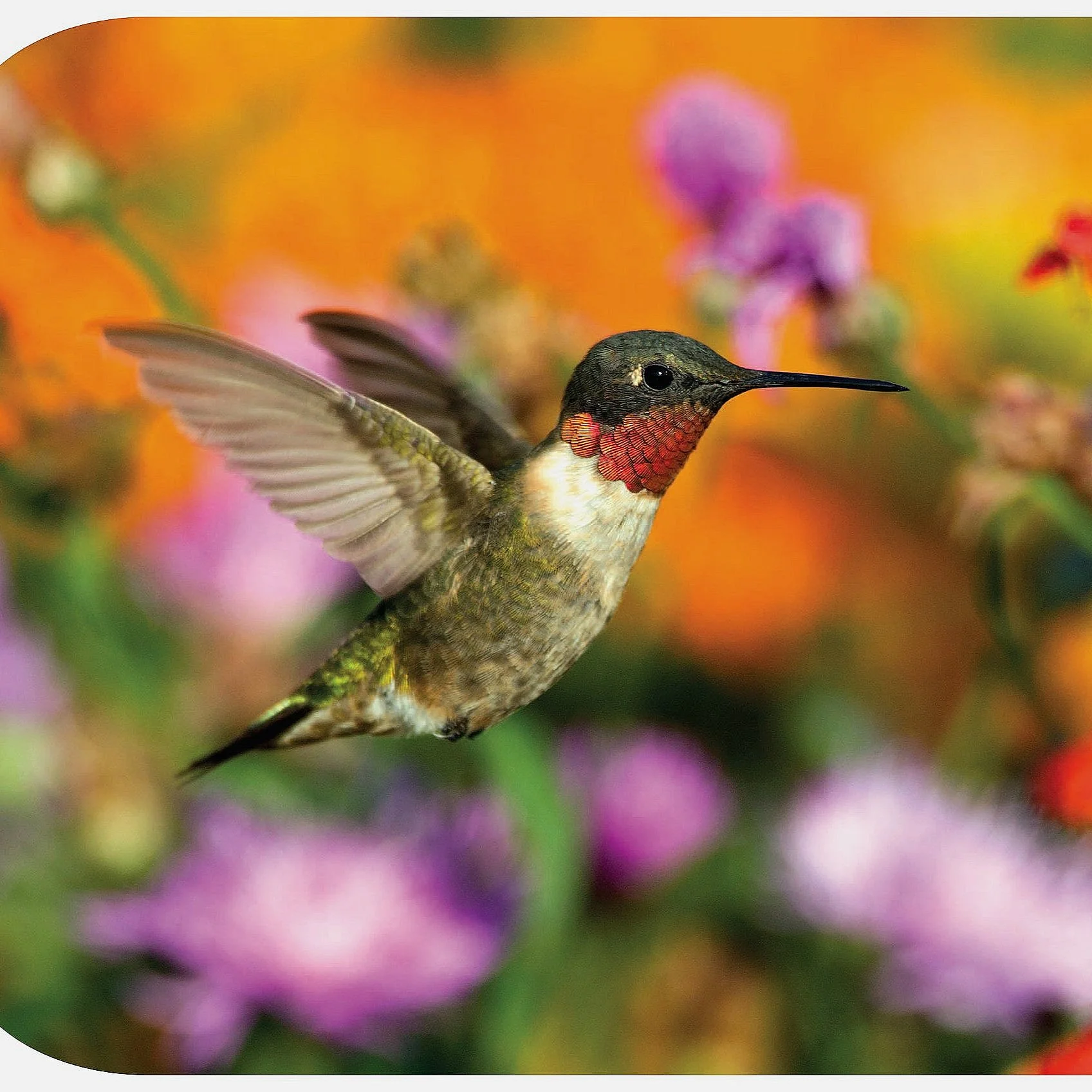BACKYARD BIRD FAQ
w/ Katie Andersen
Attracting Hummingbirds
Ruby-throated Hummingbirds are popular backyard visitors and one of the most anticipated birds to see in our yards each spring. There are several things you can do to help attract hummingbirds to your yard. Hummingbird feeders, hummingbird plants, not using pesticides and chemical lawn services, providing water, and providing nest material all help make your yard into a hummingbird haven.
Hummingbird Feeders
The most common way to attract hummingbirds is to offer nectar in a Hummingbird Feeder. Nectar for hummingbirds is quite simple to make. Mix 1 part plain white table sugar to 4 parts water. Stir until sugar dissolves. DO NOT add food coloring. Most feeders have enough red on them to catch the hummingbirds' attention. If you want more red, tie a red ribbon on the feeder until the birds discover it. DO NOT use honey or sugar substitutes to make the nectar.
If you are planning on storing some of the solution in your fridge, you can boil the water first and then measure out your four parts. Be sure to let the solution cool before filling your feeders. Make sure you change the nectar every several days to keep it fresh. Ruby-throated Hummingbirds are the only hummingbird species to breed east of the Mississippi River. They are a very territorial species and it is not unusual for a single bird to defend your hummingbird feeder against all other rivals. To bring more hummingbirds to your yard, scatter several small feeders around the yard to make it hard for one bird to defend all of them.
Hummingbird Plants
Hummingbirds will visit a number of different plants to drink their nectar. Most any brightly-colored, long, tubular flower will attract hummingbirds. Some popular plants for hummingbirds include fuchsias, bee balm, foxglove, cardinal flower, columbine,hollyhocks, butterfly bush, honeysuckle, scarlet bush, trumpet creeper, and paintbrush.Hanging baskets, container gardens, and wildflower gardens all work to attract hummingbirds.
Avoid Pesticides
Hummingbirds use nectar for quick energy, but to get the important proteins and vitamins they need to survive they must consume small insects and spiders. Hummingbirds may consume half their body weight or more every day in insects and spiders! Female Hummingbirds use spiderwebs to build their nests. Pesticides and chemical lawn service remove insects and spiders from your yard's ecosystem, and the hummingbirds disappear as a result. Do your hummingbirds, the environment, and yourself a favor by planting drought-resistant and pest-resistant native grasses and plants that don't require expensive and harmful chemical control.
Provide Water
Although their liquid-heavy diet means they seldom seek water to drink, hummingbirds still require water for bathing to keep their feathers in working order. Hummingbirds typically do not visit bird baths to bathe, but fly through water spray, instead. Misters provide a fine spray of water that hummingbirds, as well as many other bird species, will enjoy flying through as they 'shower'. Provide skinny sticks nearby and you'll be able to watch the hummingbirds perch and preen their feathers after they have flown through the water.
Provide Nesting Material
One of the most important components to a hummingbird's nest are spiderwebs. A female hummingbird will gather webs to help hold her nest together and give the nest strength and flexibility. Leaving parts of your garden 'messy' gives spiders a place to make their webs and hummingbirds a spot to find these webs.
The Hummingbird Annual Cycle
Hummingbirds exhibit a cycle of activity every spring and summer in our area. Ruby-throated Hummingbirds return to the area around May 1st every year. Activity at feeders is very steady during the whole month of May. Some birds set up breeding territories here, while others stop to fuel up before continuing their journey north.
And then June arrives and everybody starts asking, "Where are my hummingbirds?" Hummingbirds nest in June and there is very little feeder activity at this time for many people. Don't worry, just keep a small amount of nectar out and make sure it is fresh for any birds that stop in. At the end of June and the beginning of July, feeder activity explodes again. The young are off the nest, the adults are actively feeding to put on fat for the journey south, and feeders are humming with birds.
Activity continues to be steady July through August. Adult birds begin leaving in late July. Adult males leave first, followed by adult females, followed by the young hatched this year. This same pattern happens to the north of us, so we'll see their males, then females, then young passing back through as well. All said, the southbound migration of hummingbirds is a protracted event in our area, lasting until mid October. Our birds will winter in Central America, some as far south as Panama! Their long journey north will begin in January, starting the cycle again!


